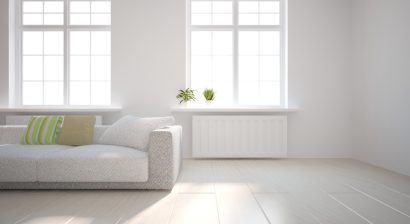Advantages and Disadvantages of Double-Pane Windows

Double-pane windows are widely recognized for their energy-saving capabilities, potentially resulting in both cost savings and an increase in your home’s value. But is this reputation truly justified?
According to data from the Department of Energy, windows account for a significant 25 – 30 percent of energy loss in households. Therefore, selecting the right windows and ensuring proper installation by a skilled professional are crucial steps toward achieving energy efficiency, financial benefits, and improved home comfort. This not only translates to saving money but also guarantees a more pleasant living environment.
Types of Double-Pane Windows
While double-pane windows are popular, it’s important to understand the various types available to find the perfect fit for your home. Here’s a breakdown of some options:
Frame Materials: Double-pane window frames can be made from vinyl, wood, aluminum, or fiberglass, each offering distinct advantages such as cost-effectiveness, durability, or energy efficiency.
Gas Infusion: Manufacturers often inject inert gases like Argon or Krypton between window panes to provide additional insulation, reducing heat transfer and boosting energy efficiency.
Glazing Options: Double-pane windows may feature Low-E (low-emissivity) glass with special coatings to reflect infrared light, or tinted glass for glare reduction and UV protection.
Design Variety: From sliding to casement, awning, bay, or bow windows, double-pane windows come in a wide range of designs to suit different architectural styles and personal preferences.
Customization: Many manufacturers offer customization options, allowing homeowners to choose specific features, dimensions, and finishes to match their home decor and architectural style.
Energy Efficiency Ratings: Consider the energy efficiency rating when selecting double-pane windows to ensure maximum benefits from your investment.
Comparison with Single and Triple-Pane Windows
To make an informed decision, it’s essential to compare double-pane windows with single and triple-pane alternatives:
Single-Pane Windows: While less expensive upfront, single-pane windows lack insulation and energy efficiency, resulting in potentially higher energy bills and reduced comfort.
Double-Pane Windows: Offering superior insulation and a balanced compromise between performance and cost, double-pane windows are ideal for homeowners seeking comfort and energy savings.
Triple-Pane Windows: Triple-pane windows provide even greater insulation and energy efficiency but come with a higher price tag and more complex installation.
Pros and Cons of Double-Pane Windows
Here’s a closer look at the advantages and disadvantages of double-pane windows:
Pros:
- Lower energy bills
- Enhanced comfort
- Environmental benefits
- Improved security
- Reduction of condensation issues
Cons:
- Higher initial investment
- Whole-home upgrade requirement
- Compatibility issues with some homes
Professional Installation
It’s crucial to have double-pane windows professionally installed to ensure maximum energy efficiency and integration with your home. Professional installers can guide you in choosing the right windows and ensure proper installation for optimal performance.
Conclusion
Consider factors like climate, budget, and personal preferences when choosing double-pane windows for your home. While they require an initial investment, the long-term benefits in energy savings and comfort make them a worthwhile investment. Additionally, professional installation is key to maximizing their performance and enhancing your home’s value and curb appeal.





